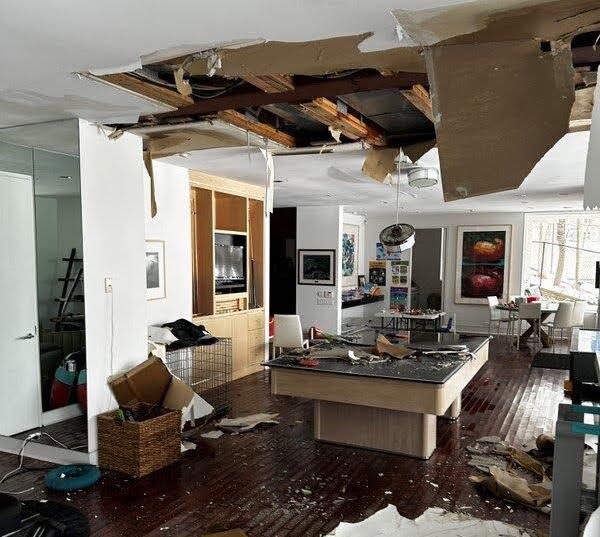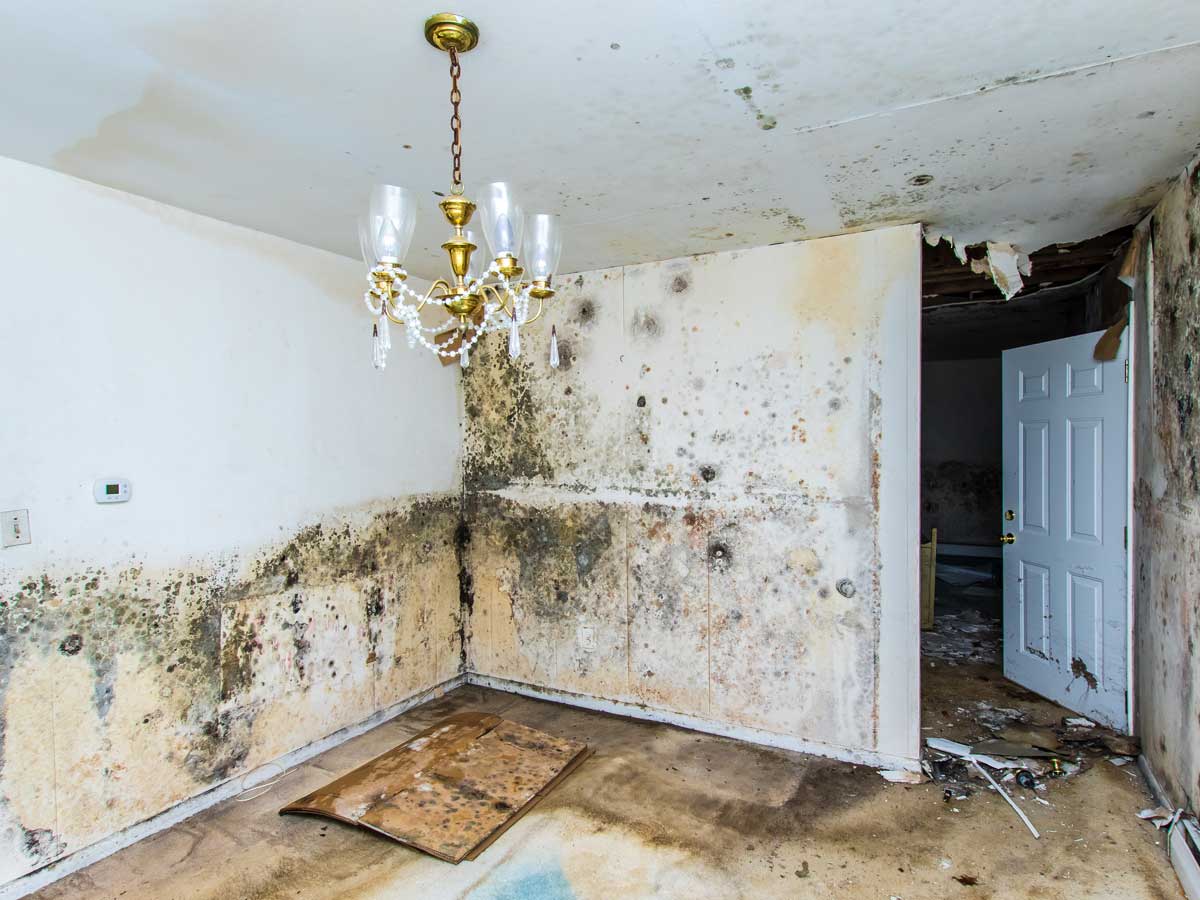Experienced Water Mitigation Company Offering Comprehensive Water Damage Solutions
Experienced Water Mitigation Company Offering Comprehensive Water Damage Solutions
Blog Article
The Process of Water Damages Clean-up: Ensuring Your Home Is Recovered Successfully
Water damage can be a challenging challenge for home owners, requiring a meticulous and organized clean-up procedure to bring back safety and performance. A thorough evaluation is essential to determine the level of the damage and figure out the appropriate remediation actions. Following this, effective water removal techniques play an essential role in alleviating further damage. Nonetheless, the nuances of drying, disinfecting, and eventual remediation are just as important and commonly overlooked. Comprehending these phases can make a considerable distinction in the outcome of your home's remediation, triggering a closer take a look at what each step involves.
Examining the Damages
Upon finding water damage, the initial step is to thoroughly evaluate the extent of the impact. This initial examination is vital, as it aids figure out the needed steps for effective cleanup and restoration. Begin by evaluating the influenced locations, including walls, ceilings, floorings, and individual possessions, to identify the resource of the water breach, whether from flooding, leaks, or condensation.
Documenting the damages is necessary for both insurance policy cases and preparing restoration initiatives - damage restoration services. Usage photographs and created notes to catch the seriousness of the damage, keeping in mind any affected architectural aspects and products. Pay unique attention to locations that may not be instantly noticeable, such as behind wall surfaces and under rugs, as hidden wetness can result in further difficulties, including mold and mildew growth
In addition, assess the timeline of the water direct exposure. The longer the materials continue to be wet, the greater the capacity for damage. Comprehending the duration of direct exposure will certainly notify the urgency of remediation initiatives. Eventually, a comprehensive evaluation lays the groundwork for a successful water damages cleaning procedure, ensuring that all impacted locations are dealt with effectively and completely.
Water Removal Strategies

Professionals normally use completely submersible pumps for larger volumes of water, which can swiftly relieve flooding in cellars or various other impacted locations. For smaller sized amounts, wet/dry vacuum cleaners are often used to extract residual moisture from carpets and tough surface areas. In addition, making use of mobile extractors permits targeted elimination in restricted areas or areas with delicate products.
In circumstances of infected water, such as sewer or floodwater, advanced extraction strategies might entail using biohazard devices to guarantee safety and conformity with wellness guidelines. High-powered extraction tools are crucial in minimizing water retention in structural products, which can cause mold growth and architectural damage otherwise dealt with promptly.
Inevitably, the efficiency of water extraction techniques plays a crucial function in the overall success of the water damages clean-up procedure, preparing for subsequent reconstruction initiatives.
Drying and Dehumidification
When standing water has actually been properly drawn out, the following essential stage in the water damages clean-up process is drying out and dehumidification. This action is important to avoid further damages and mold and mildew development, which can occur within 24 to two days in damp atmospheres.
To achieve effective drying, customized tools such as industrial-grade air movers and dehumidifiers is employed. Air movers distribute air across damp surface areas, boosting dissipation rates, while dehumidifiers reduce humidity levels airborne, advertising a helpful environment for drying. The mix of these tools makes certain that moisture is extracted from floorings, wall surfaces, and furnishings, permitting them to dry thoroughly.
It is necessary to keep an eye on the drying out process carefully. Professionals frequently use wetness meters to assess the dampness material in numerous products, making sure that all impacted locations get to acceptable dryness degrees. This meticulous method helps to prevent covert dampness pockets that might result in structural damages or harmful mold and mildew growth.

Cleansing and Disinfecting
After the drying and dehumidification stage is complete, the next crucial action in water damages clean-up is cleaning and disinfecting the influenced locations. This procedure is crucial to stop the development of mold and mildew, bacteria, and various other virus that prosper in moist environments.
The cleansing stage generally includes removing any particles, dust, and impurities from surface areas making use of specialized cleansing representatives. For hard surface areas, a mix of soap and water or commercial cleaning items is typically utilized. Soft materials, such as furniture and rugs, might need much more substantial cleaning approaches, consisting of heavy steam cleansing or deep extraction methods, to make sure extensive sanitation.

Sanitizing complies with cleansing, making use of EPA-approved disinfectants to eliminate hazardous bacteria. This step is necessary, especially in locations that may have entered into contact with floodwaters or sewage, as these sources can present severe health risks.
In addition, it is crucial Related Site to attend to any staying smells, which might need making use of odor neutralizers or sophisticated strategies like ozone therapy. Correct cleaning and sterilizing not only recover the security and health of your home but additionally lay the groundwork for successful reconstruction and repair work in subsequent phases of the water damages clean-up procedure.
Restoration and Repairs
:max_bytes(150000):strip_icc()/GettyImages-1499353990-49a5c958582445b0a55dbceda3a9097d.jpg)
Once the evaluation is total, remediation initiatives can start. In addition, floor covering may call for comparable attention, depending on the degree of water exposure.
It is essential to involve seasoned remediation experts during this process, as they possess the proficiency to handle complicated fixings effectively. They can help reduce possible future concerns, such as mold and mildew growth or structural instability, hence guaranteeing a risk-free and habitable living setting. Ultimately, efficient restoration and repair services recover the home's integrity and improve its total water damage miami value.
Final Thought
Finally, the process of water damage cleaning is vital for recovering a home to its pre-damage condition. Each phase, from assessing water and fire damage the damages to applying effective water removal techniques, complied with by thorough drying, disinfecting, and required fixings, plays a necessary role in making sure safety and compliance with structure standards. Efficient implementation of these steps not only alleviates prompt damages but additionally enhances the long-lasting honesty and worth of the property.
Water damages can be an overwhelming challenge for home owners, necessitating a organized and careful cleanup process to restore safety and capability. Inevitably, a thorough assessment lays the foundation for a successful water damages clean-up process, making certain that all influenced areas are addressed effectively and extensively.
Efficient water removal methods are important in mitigating damages and preventing more complications complying with a water intrusion occasion.In conclusion, the procedure of water damages clean-up is critical for bring back a home to its pre-damage condition. Each phase, from assessing the damage to applying efficient water removal techniques, adhered to by extensive drying out, sterilizing, and essential repair work, plays an important role in making sure safety and compliance with structure standards.
Report this page